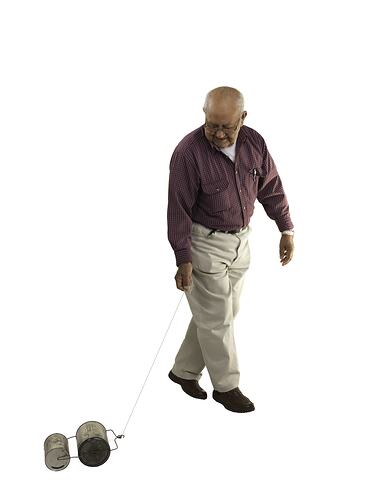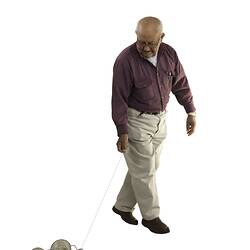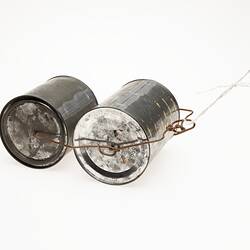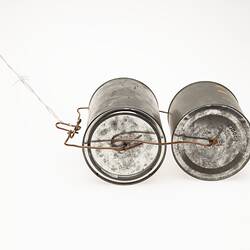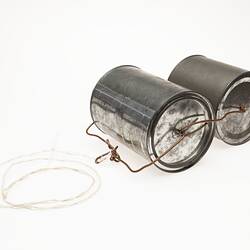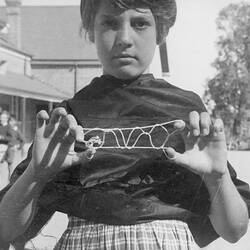Summary
Tin rollers toy made and donated by John 'Sandy' Atkinson, 1988.
Rollers such as these were documented in the Aboriginal Children's Play Project in the late 1980s.
This object is part of the Australian Children's Folklore Collection. The ACFC is unique in Australia, documenting contemporary children's folklore across Australia and in other countries, reaching back to the 1870s. The Collection has a strong component of research material relating to Victoria.
Throughout the world, and particularly in developing countries, children play with toys and other playthings which have been hand-made, by themselves or adults, for their amusement. The toys children create are often made from materials which have been discarded, such as tins, buttons, boxes, packaging materials and pieces of wire. In inland Australia, Aboriginal children use powdered milk tins to make rollers, which they fill with sand and join together to pull along and have races. Home-made pull-along or push-along toys are some of the playthings made and used by children in many countries. These tin rollers were made by 'Sandy' Atkinson, who grew up on the Cumeragunga Mission on the Murray River. They are typical of the rollers made by Aboriginal children in inland Australia.
Physical Description
Tin rollers, made from recycled materials. The rollers are two metal tins with lids, one larger than the other. The tins are silver, and have glue marks from the labels. A hole has been made through the lid and bottom of each tin, and a thick copper wire threaded through. The wire joins one tin to the other, and forms a handle for the front tin. A looped piece of white cord is tied onto the handle. The cord is 95cm long. There is a small amount of sand or dirt in both rollers.
More Information
-
Collection Names
-
Collecting Areas
-
Acquisition Information
Cultural Gifts Donation from Dr June Factor, 18 May 1999
-
Acknowledgement
Donated through the Australian Government's Cultural Gifts Program.
-
Maker
John (Sandy) Atkinson, Melbourne, Greater Melbourne, Victoria, Australia, 1988
-
Place & Date Used
-
Collector
-
Inscriptions
Moulded into base of smaller tin: E10002/UMCJU Moulded into base of larger tin: E10002
-
Classification
-
Category
-
Discipline
-
Type of item
-
Object Dimensions
155 mm (Length), 240 mm (Width), 105 mm (Height)
-
Keywords
Aboriginal People, Children's Play, Containers, Handmade Games & Toys, Making Do, Toys, Making History - Australian Childrens Folklore
